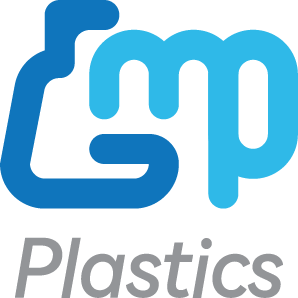Hey there, science enthusiasts! Today, we’re diving into the fascinating world of deep well plates—those unsung heroes of the lab that help scientists store, transport, and process samples efficiently. But wait! If you’re working with deep well plates, you’ll want to keep those samples safe and sound, right? That means you need a solid sealing strategy. So, let’s talk about how deep well plates are sealed and why it matters!
What Are Deep Well Plates?
These laboratory tools look like small trays filled with multiple wells, and they’re used to hold liquids or samples for testing, storage, and analysis. They come in various materials, well volumes, and configurations, making them essential in research, pharmaceuticals, and biotech industries.
However, since these plates often hold valuable samples, preventing contamination and evaporation is crucial. That’s where sealing methods come in! Scientists use four primary ways to seal deep well plates: adhesive films, heat seals, silicone or rubber sealing mats, and plastic lids. Each method has its own strengths, so let’s break them down.
1. Adhesive Films: The Sticky Solution
Adhesive films are like science’s version of cling wrap! These ultra-thin films stick to the edges of the deep well plate, creating a secure barrier against contaminants and evaporation.
Why Use Adhesive Films?
-
Easy to apply – Just peel and stick!
-
Cost-effective – A budget-friendly option for many labs.
-
Compatible with automation – Many robotic systems can apply adhesive films without human intervention.
-
Available in different materials – Some provide gas exchange, while others form airtight seals for long-term storage.
When Should You Use Adhesive Films?
Adhesive films work well for short-term storage, PCR applications, and low-temperature experiments. However, they’re not always the best choice for extreme heat or long-term storage, as they may degrade over time or lose adhesion.
2. Heat Seals: A High-Tech Lock
Next up, we have heat seals—arguably the most durable option! Heat sealing involves placing a specialized film over the plate and applying heat and pressure to fuse the film to the rim of each well. It’s like shrink-wrapping your samples for ultimate security!
Why Use Heat Seals?
-
Superior sealing strength – Prevents evaporation and cross-contamination.
-
Ideal for long-term storage – Holds up against extreme temperatures.
-
Tamper-proof – Once sealed, they can’t be easily reopened, ensuring sample integrity.
-
Customizable materials – Permeable, pierceable, or airtight films available.
When Should You Use Heat Seals?
Heat sealing is ideal for high-throughput applications, long-term sample storage, and assays that require ultra-secure containment. However, once you apply a heat seal, it’s not easy to remove without special tools, so make sure you’re okay with a more permanent solution.
3. Silicone or Rubber Sealing Mats: The Flexible Fit
Silicone and rubber sealing mats are reusable, durable options for sealing deep well plates. These flexible mats sit on top of the plate, forming a tight seal over each well without the need for adhesives or heat.
Why Use Silicone or Rubber Sealing Mats?
-
Reusable – Eco-friendly and cost-effective over time.
-
Flexible and durable – Can withstand repeated use and sterilization.
-
Great for automation – Easily applied and removed with robotic systems.
-
Protects samples from contamination – Forms a solid barrier against outside elements.
When Should You Use Silicone or Rubber Sealing Mats?
These mats are excellent for high-throughput screening, automation, and applications requiring repeated access to samples. However, they may not provide the same airtight seal as heat sealing, making them less ideal for long-term storage.
4. Plastic Lids: The Classic Cover
Sometimes, you just need a simple solution. Plastic lids are exactly what they sound like—snap-on or hinged covers that protect deep well plates from dust and contamination.
Why Use Plastic Lids?
-
Simple and reusable – No need for adhesives or special equipment.
-
Good for short-term storage – Protects samples from debris and contamination.
-
Variety of designs – Some lids have vents for gas exchange, while others provide airtight seals.
-
Stackable – Makes plate storage more convenient.
When Should You Use Plastic Lids?
Plastic lids are best for temporary sample protection, transportation, and applications that don’t require a perfect seal. However, they don’t prevent evaporation as effectively as other sealing methods, so they may not be the best choice for volatile samples.
Choosing the Right Seal for Your Application
So, how do you choose the best sealing method? It all depends on what you’re working with! Here’s a quick guide to help:
| Sealing Method | Best For | Pros | Cons |
|---|---|---|---|
| Adhesive Films | Short-term storage, PCR | Easy to apply, cost-effective | May degrade over time |
| Heat Seals | Long-term storage, high-throughput screening | Tamper-proof, prevents evaporation | Permanent, requires special equipment |
| Silicone/Rubber Mats | Automation, repeated access | Reusable, durable | Not fully airtight |
| Plastic Lids | Temporary protection, transport | Reusable, easy to use | Limited evaporation control |
Final Thoughts: The Science of Sealing!
Deep well plates are an essential tool in labs, but they’re only as good as their seals! Whether you’re using adhesive films, heat seals, silicone mats, or plastic lids, each method has its own advantages depending on your needs. So next time you’re working in the lab, remember—choosing the right sealing method is just as important as the science you’re conducting!
Stay curious, keep experimenting, and don’t forget to seal your plates properly! Science rules! 🚀



